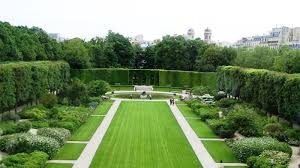It’s hard to imagine but at one time, perhaps thousands of years ago, the Sphinx and the tombs, temples, and pyramids of Egypt were surrounded by lush Egyptian Gardens. The designers of the garden were motivated by religious considerations which dictated the forms of the gardens and what plans were used in them.

Egyptian Gardens Plants
Some of the more common plants in Egyptian gardens include daisies, cornflowers, mandrakes, roses, irises, myrtle, jasmine, mignonettes, convolvCelosiaelosia, narcissus, ivy, lychnis, sweet marjoram, henna, bay laurel, small yellow chrysanthemums, and poppies. There were also Papyrus, Lotus, and grapes.
Gardens were not simply for pleasant environs to the Ancient Egyptians. There were many symbolisms associated with trees, including to specific gods such as Osiris, Nut, Isis, and Hathor. They also had creation overtones, as well as funerary. The Papyrus and Lotus plants were symbolic of the two regions of Lower and Upper Egypt (respectively). Of course, gardens also provided food including vegetables and wine.
In tomb depictions, these gardens were very formal with rectangular ponds and trees and vines planted in straight rows. Trees and shrubs were grown for shade and for their fruit: date and other palm trees, sycamore fig, pomegranate, nut trees and jujube. But willows, acacia, and tamarisk also found favor, about eighteen kinds of trees were grown by the Egyptians.
Due to the arid climate of Egypt, tending gardens meant constant attention and depended on irrigation. Skilled gardeners were employed by temples and households of the wealthy. Duties included planting, weeding, watering by means of a shaduf, pruning of fruit trees, digging the ground, harvesting the fruit etc. The garden in the houses was separated from the agricultural yards by a wall.
The temples of the various gods were provided with gardens in decorative layouts, as a source for flowers, vegetables and even wine and olive oil, thus providing necessary ingredients for various rituals.
Some of the trees and shrubs included tamarisk sacred to Wesir, olive, acacia, willow, date palm sacred to Re and Min, doum palm sacred to Djehuty, sycamore sacred to Het-Hert, Persea, Christ thorn, carob, myrtle and other unidentified ones.
The general layout of a garden and its buildings follows a time-honored pattern, which can still be seen today in the humblest homestead, for example, in the oasis of Bahariya. The property is enclosed with a wall all round. Inside the gateway is an unroofed courtyard, filled with trees. Then, there is another wall and another door.